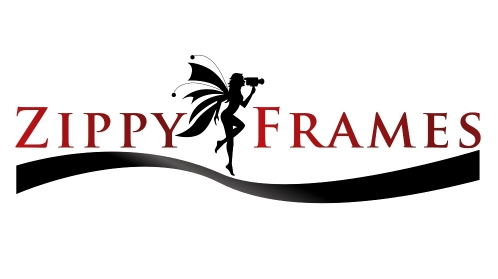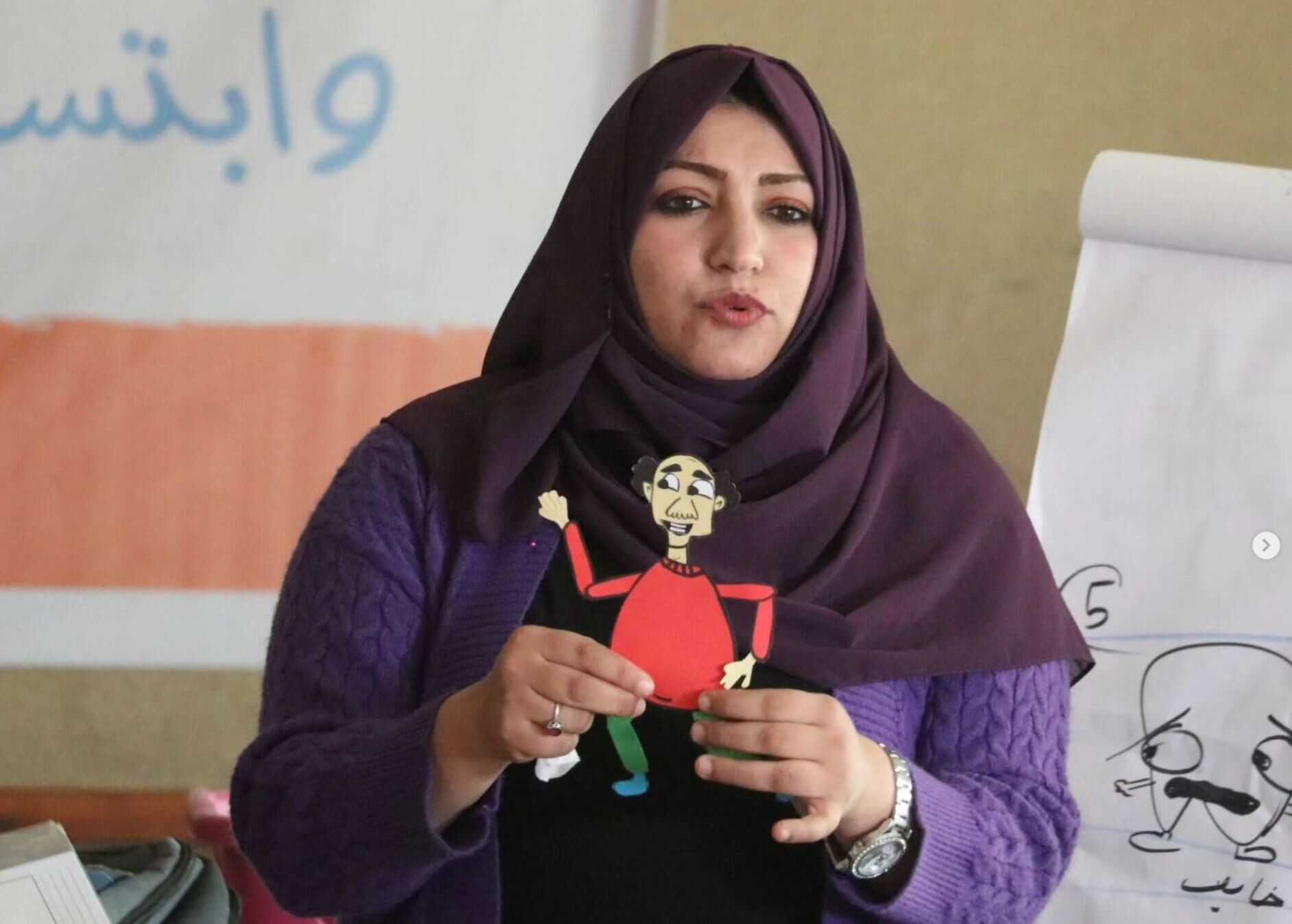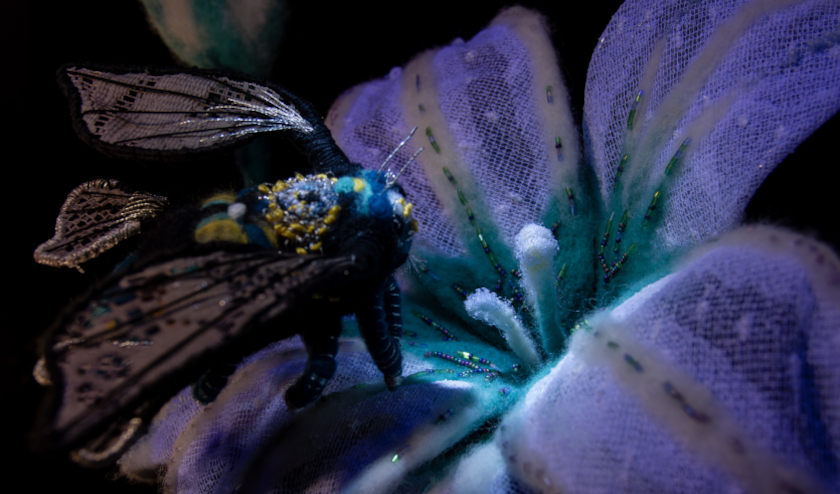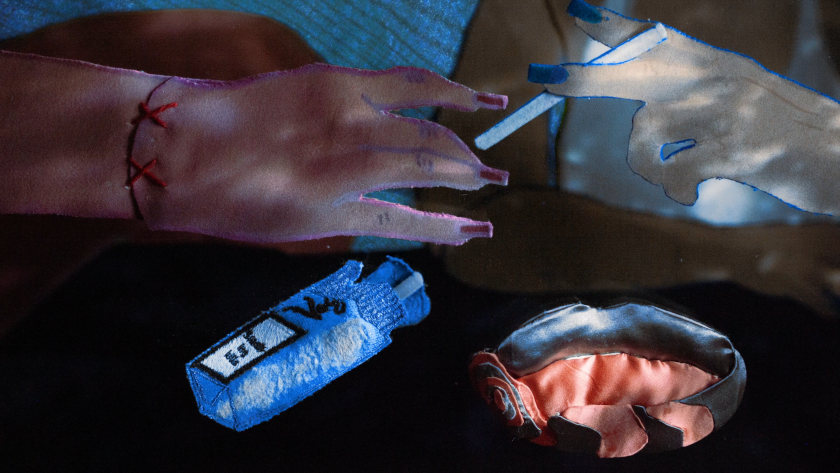"Memories with Ama' by Joan Hui Ko
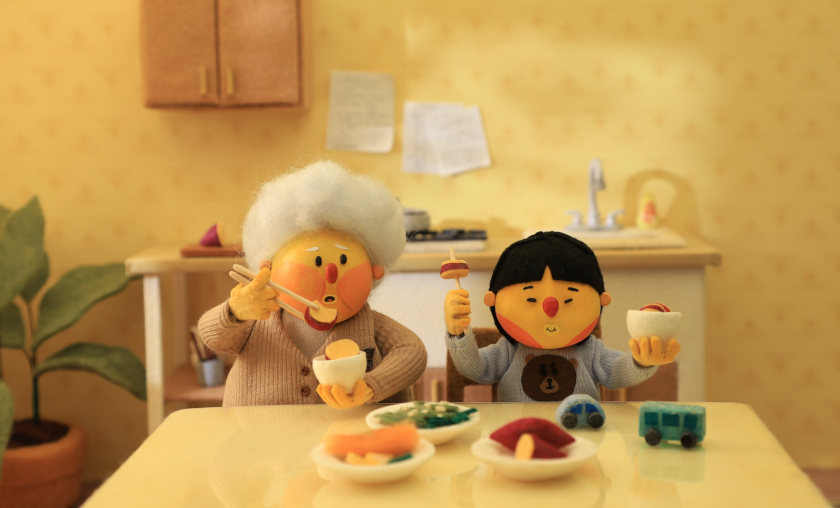
LA-based animation Joan Hui Ko is a new talent coming from CalArts and setting her skills to both professional and personal animation works. Her student film, 'Memories with Ama' is a sweet, humane story of a young girl and her grandmother, fiddling over food. In between, a lot of sentiments go underneath the stop-motion animation film and its warm, familiar sets and environments.
Joan Hui Ko premiered her animation short online for our Shorts Corner. She talks to Zippy Frames and Vassilis Kroustallis.
ZF: This is presumably a personally inspired project and animation film. Tell us how the idea was born.
JHK: The idea for this animation film stemmed from a comic I created in school, inspired by conversations with my sister about our grandmother. We often discussed how memories evolve over time, creating multiple versions of the same moment. This fascination with the malleability of memory and our tendency to romanticize the past became the cornerstone of my project.
For the film, I chose a specific memory of our grandmother coating sweet potato slices with sugar to make us eat them as children. This particular recollection encapsulates her nurturing nature and the small, everyday acts of love that leave lasting impressions. By capturing the 2021 version of this shared memory, I aimed to preserve a fleeting, imperfect recollection—a testament to how memories fade and transform over time.
ZF: Why did you decide on a puppet film? And how did you pick up the exact material? I guess it was a long process of making the puppets, let alone animating them.
JHK: My decision to create a puppet film was driven by a love for texture and material exploration. When my college professor, Stephen Chiodo, introduced me to puppet fabrication, I was immediately captivated by the rewarding nature of the craftsmanship involved—the time, attention to detail, and the fact that what you create physically exists in the world and ages over time, much like we do. In a world where AI art is increasingly prevalent, I find myself valuing the tangible nature of handmade work even more.
During my first two years of undergrad, I focused on digital 2D animation, but I knew I wanted to challenge myself to make a puppet film before graduating. The process was long and meticulous, from choosing materials to crafting and animating the puppets. However, these challenges only deepened my appreciation for the art form. The dreamy quality of felt and the softness of fabric allowed me to create a unique atmosphere, demonstrating how the materials we use can significantly impact the mood and texture of a film.
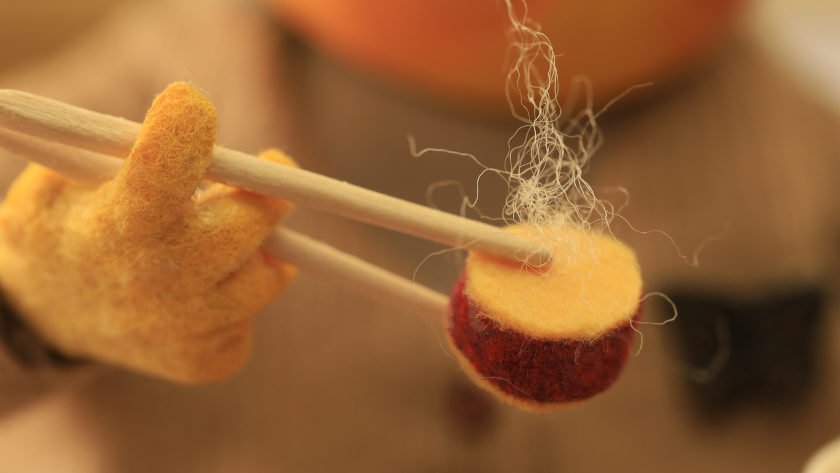
ZF: I liked the fact that you somehow need to 'deceive' children to make them eat something, and this is beautifully described in the film. Was it something you experienced as a child as well?
JHK: The theme of “deceiving” children to eat certain foods is indeed central to the film. As a child raised by my grandmother, I was notoriously picky with food. However, she nurtured me with patience and love, finding clever ways to get me to eat foods I did not like. I vividly remember how she would coat slices of sweet potato with brown sugar to make them more appealing, a small act of care that had a lasting impact on me.
Looking back as an adult, I realize how much of her ability to handle my mischievous behavior came from her experience as an elementary school teacher in a rural province in China. Her background in education equipped her with the patience and creativity needed to navigate the challenges of raising a picky eater. This film is a tribute to those everyday moments of love and care that shape our childhood memories and influence us well into adulthood.
ZF: Because of the nature of the animation, it seems that everything needs to be thought through very carefully ahead of the shooting. Did you have a specific plan with a storyboard and everything -and did everything follow through the way you wanted? Any challenges or happy accidents?
JHK: The pre-production phase was challenging, especially given the tight eight-month deadline for my thesis film. I began with multiple rounds of script revisions before moving on to storyboarding. To ensure precision, I created mock-up versions of the sets using foam boards, complete with miniature character and prop cutouts to test proportions and compositions. I even took the mock set to the studio to test lighting before finalizing the build. Initially, the story was set in a living room, but I moved it to the kitchen to reduce the number of sets needed, demonstrating how practical constraints can shape creative decisions.
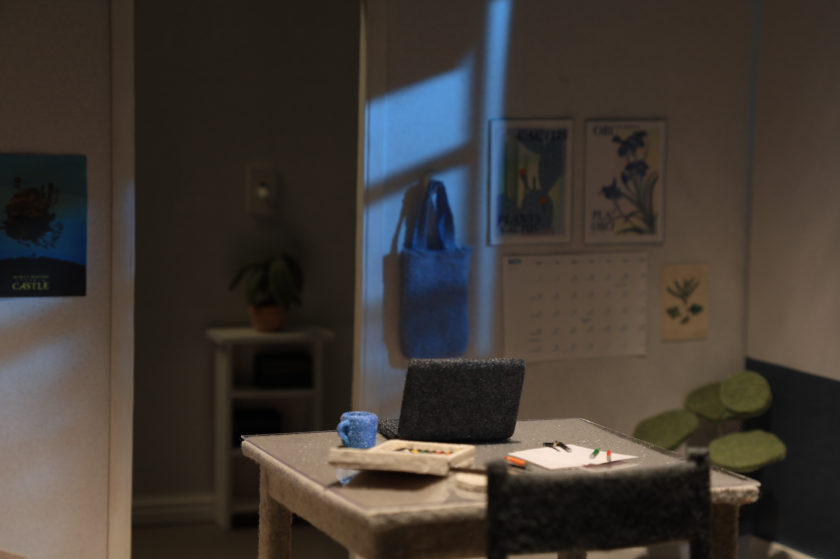
In stop motion, meticulous planning is essential due to the high cost—in terms of time and resources—of rebuilding sets. However, I also learned to embrace unexpected developments and creative adjustments along the way. These spontaneous elements often added unexpected layers to the film, enriching the final product. The process taught me the delicate balance between thorough planning and remaining open to creative inspiration during production.
ZF: This is a CalArts project. What were the constraints (time mostly, I guess) that shaped film production? Did you have any helping hands in the film?
JHK: The eight-month timeline to complete the project was a significant constraint, but it provided valuable structure and accountability. Budget was another major limitation; unlike digital animation where the school covers software costs, stop motion at CalArts requires students to largely self-fund their projects. This forced me to be creative with materials and resourceful in my approach, ultimately fostering innovation within limitations.
One of the best aspects of being at CalArts was the supportive artist community. Peers often contributed props or assisted with set-building, creating a mutually beneficial environment where we could share skills and ideas. These collaborations not only helped me complete the project but also enriched it with diverse perspectives. The constraints, while challenging, encouraged creativity and community support, teaching me valuable lessons about resourcefulness and collaboration that continue to serve me in my professional work.
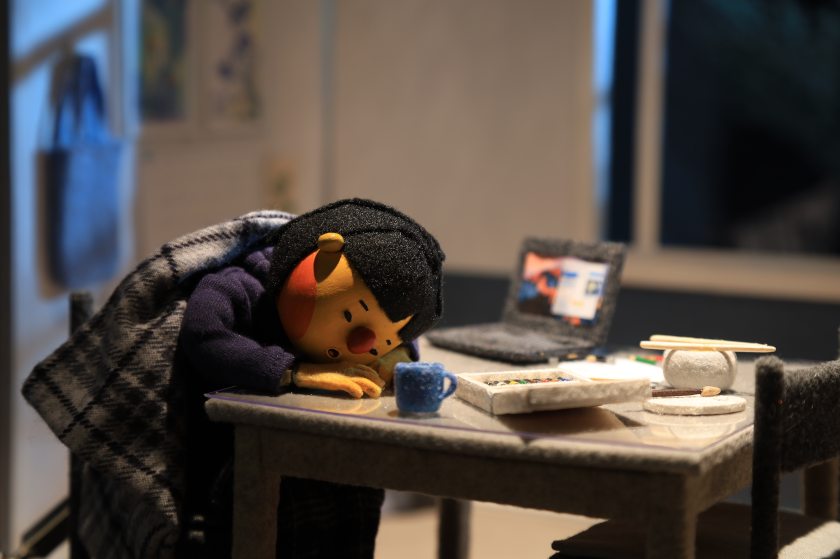
ZF: Does making a film based on personal experience (if it does) work as a bit cathartic as well? How do you feel about it after finishing the whole film?
JHK: Creating this film was a deeply cathartic process that helped me navigate intense feelings of loneliness and homesickness after moving to the U.S. to pursue my artistic career. The project allowed me to process the loss of my grandmother, who raised me and passed away when I was fourteen. It was not until years after her death that I fully confronted my grief, realizing I had been in denial for a long time.
Turning a segment of my comic, which was dedicated to our shared memories, into this stop-motion film allowed me to revisit those moments and pay tribute to her in a tangible, heartfelt way. The process of creating the film became a form of therapy, helping me work through my emotions and celebrate the impact my grandmother had on my life. It reinforced the power of art as a medium for emotional expression and healing.
ZF: Is this project part of a longer one? It states Part I in the title. What are your future animation plans?
JHK: Initially, I envisioned completing all three parts of the stories from the comic version. However, time and budget constraints meant I could only finish the first part. I have built portions of the sets for parts two and three, which involve memories of my grandmother comforting me during a wisdom tooth cavity and our time spent swimming outdoors. While I may not complete these remaining segments immediately, the groundwork is laid for potential future expansion of the series.
Since graduating from CalArts, I have been working as a freelance puppet fabricator and animator, primarily on music videos and commercials. While I miss the days of focusing solely on filmmaking, this professional experience is invaluable. The possibility of revisiting and completing the other parts of this series remains open, serving as a potential future project that could further explore the themes of memory and family bonds.
Watch 'Memories with Ama' by Joan Hui Ko
About Joan Hui Ko
Joan is a stop-motion artist and animation educator based in Los Angeles, CA. She earned her bachelor’s degree in Experimental Animation from the California Institute of the Arts in 2022. Originally from the Philippines, Joan moved to China on her own at the age of nine and has since lived in a variety of places, including Manila, Shanghai, Hong Kong, and Los Angeles. Her diverse background reflects a life of movement and exploration, making her versatile, adventurous, and eager to embrace new possibilities. Joan worked as a puppet fabricator for the Backstreet Boys’ music video 'Christmas in New York' and also created puppets for commercials for major brands like Jack in the Box, Mattel's American Girl, and Lego for Jurassic Park. Joan currently teaches animation at a private high school in Thousand Oaks, California, and also at the free online animation program, Sony Pictures Media Arts Program (SPMAP), with the goal of making animation accessible to all.
